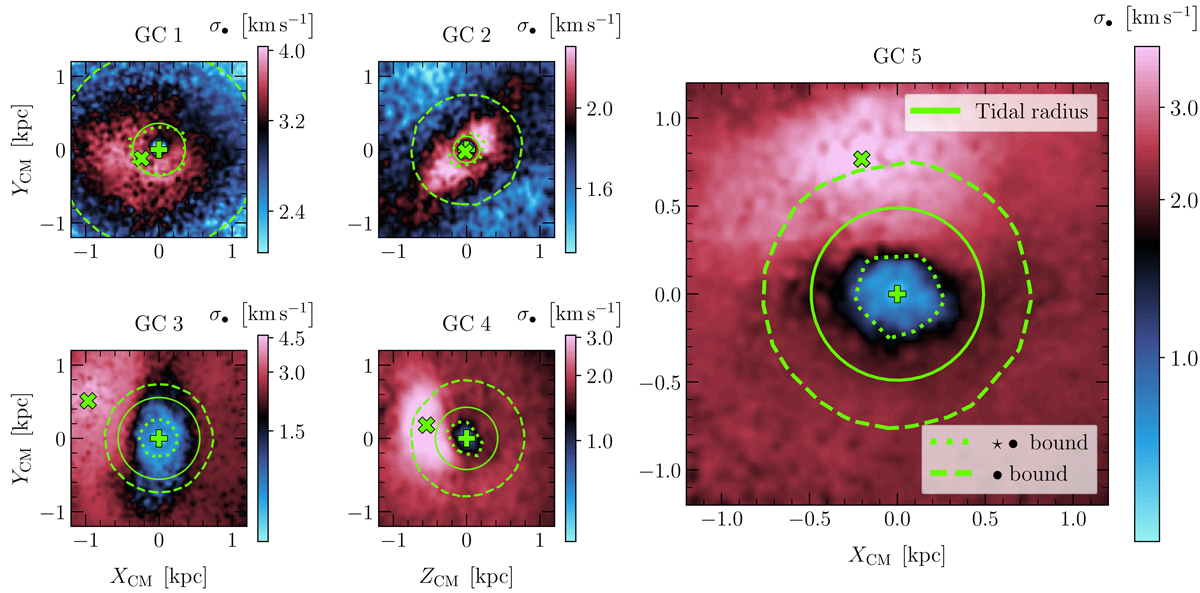Fig. 8.

Download original image
Survival of the dark matter mini-halo: Similarly to Fig. 2, we show the velocity dispersion map of dark matter particles for the five globular clusters we simulated, projected in the X vs. Y plane (with exception of GC4, projected on the Z vs. Y plane for better visualisation of its orbit) and centred in the centre of mass of the globular cluster system. We display the last pericentre passages of their respective orbits, where the tidal effects are stronger. One can notice that while GCs 3, 4 and 5 manage to keep the dark matter mini-halo (and thus the dark matter shield effect depicted in Fig. 2), GCs 1 and 2 do not. The extent of the red region for GCs 1 and 2 is related to their different orbital parameters. For GCs 3, 4 and 5, we again notice that the empirical tidal radius is well traced by the internal blue region.
Current usage metrics show cumulative count of Article Views (full-text article views including HTML views, PDF and ePub downloads, according to the available data) and Abstracts Views on Vision4Press platform.
Data correspond to usage on the plateform after 2015. The current usage metrics is available 48-96 hours after online publication and is updated daily on week days.
Initial download of the metrics may take a while.


